Weasels are the smallest carnivorous mammals in the world. They are often maligned for being sneaky critters that wreak havoc on domesticated chickens and other birds. Nevertheless, weasels occupy an important and necessary part of the food chain. We’re going to take a look at what weasels eat and show you how such small animals manage to be such successful predators.

This topic is especially interesting when you consider the smallest weasels can be between 4 to 10 inches in length and only weigh a few ounces. Larger weasels grow up to 12 inches from nose to tail and weigh up to 12 ounces.
Although their small size, flat-topped heads, and slinky bodies make them appear like cuddly animals, weasels are quite ferocious as predators looking for food.
What Foods Do Weasels Eat?
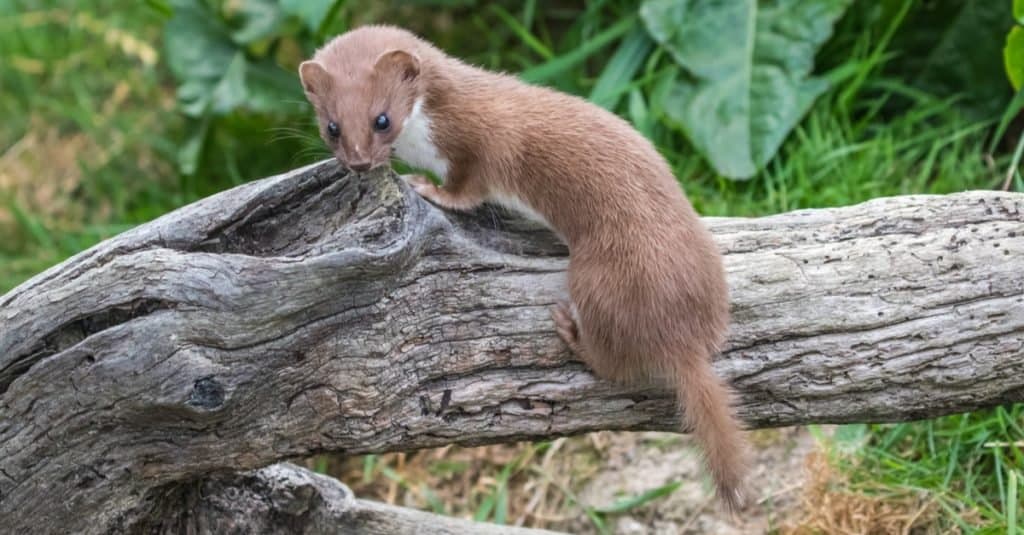
Weasels are excellent hunters and eat many animals across their large range.
©Stephan Morris/Shutterstock.com
Weasels are carnivores that eat various types of animals and are very successful hunters. Most species have a strictly carnivorous diet that is rather adaptable to the area in which they live. Weasels live all around the world, including North America, Europe, and Asia. In each of their habitats, they find appropriate and somewhat similar prey.
Among the most common foods that weasels eat are:
Their variable diet allows weasels to find potential prey with ease.
Interestingly, the same characteristics that make them such deadly hunters necessitate their daily consumption of about one-third of their body weight each day.
Weasels are long, slender animals that have a lot of surface area. As a result, they lose a significant amount of body heat and have to replenish their energy reserves frequently.
How Do Weasels Hunt?
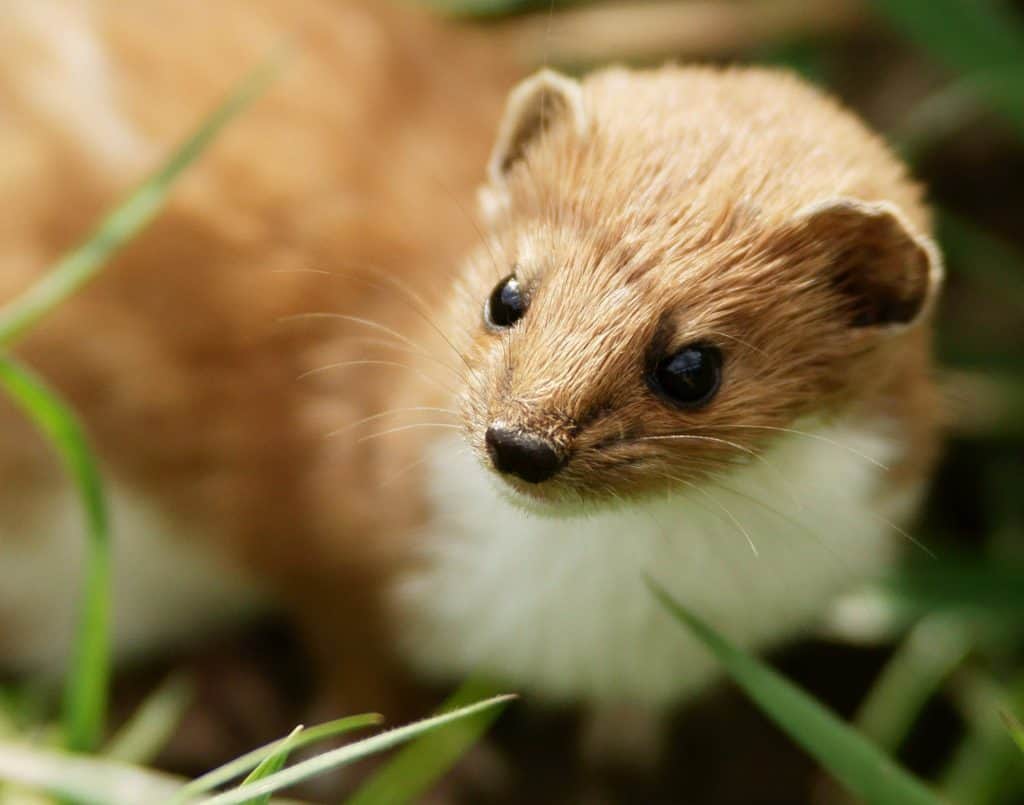
Weasels are perfectly shaped to fit in tight spots.
When you think of the best predators in the animal kingdom, your mind might go to lions and tigers. Leaving weasels out of that conversation is a mistake, though. They’re perfectly built to hunt and consume their prey.
Their long, slim bodies and flat-topped heads allow weasels to get into small spaces. Thus, weasels have frequently gotten into chicken coops to kill and eat chickens, and they’re very capable of getting into animals’ nests and burrows.
Their diminutive size may not appear intimidating to some animals, but weasels have been known to attack, kill, and consume animals several times their size. Weasels will also kill more animals than they need to eat at the time; the rest of their prey will be stored in their dens.
Weasels follow their prey by scent and sight. When they find potential prey, weasels will pounce on them while biting at the base of their skull. They use their forelegs to grasp the prey and their hind legs to inflict scratches and kicks.
The weasel’s inclination to eat any suitable and abundant prey has made them useful to humans in some cases. Along with stoats, weasels have been introduced to countries in the world as a form of pest control.
Since they frequently eat rodents, birds, and other pests, weasels and stoats were sent to New Zealand, but their population has not thrived due to relatively low numbers of available prey. Thus, small numbers of weasels remain to feast on the pests in the country which are not used to such an effective carnivorous animal.
What Do Weasels Eat in the Winter?
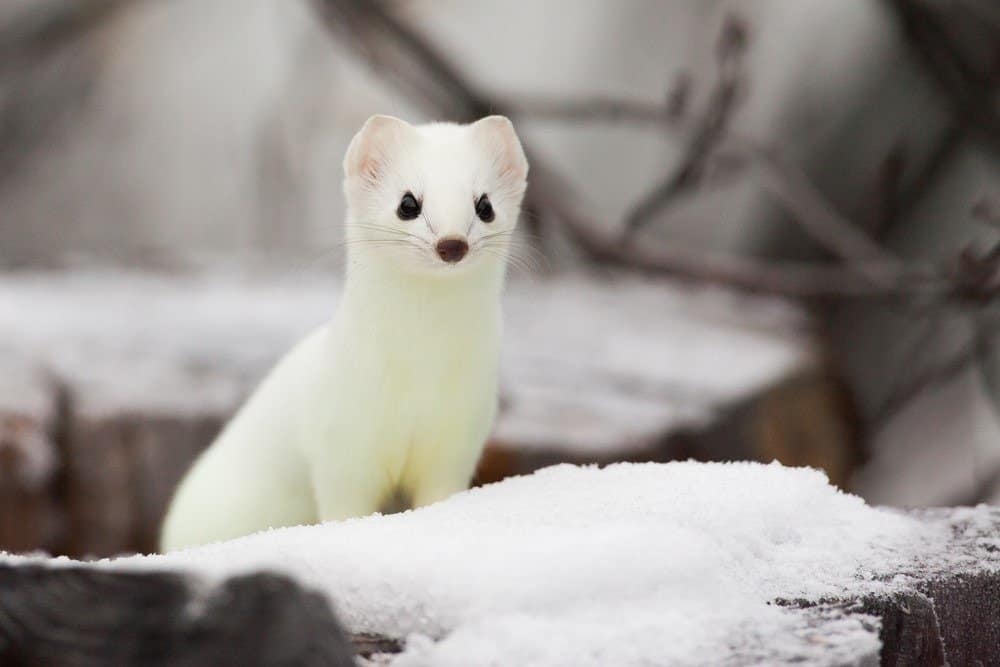
Some weasels’ fur turns entirely white in winter
©Jukka Jantunen/Shutterstock.com
Weasels inhabit mostly northern areas around the world, and that means they are subjected to some rather harsh winters. As we’ve already shown, weasels need a fair amount of energy to thrive, and that means they must frequently hunt.
During the wintertime, weasels have to be more alert and dedicated to finding food. They will often raid the burrows of other animals, especially rodents, to secure a meal. Weasels will often move closer to human settlements that have attracted mice and other pests, hunting them and taking portions back to their own dens.
Although many birds migrate for the season, weasels will attack the ones that remain along with foraging animals.
What Do Baby Weasels Eat?
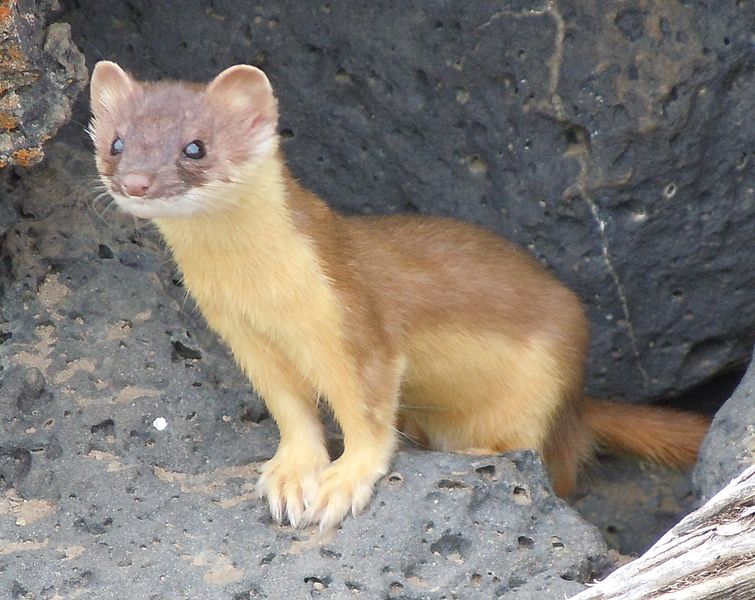
Weasels learn to hunt from a young age.
Baby weasels are called kittens and like many mammals begin their lives drinking milk from their mothers. After a few weeks have passed, the kittens will start to feed on meat that is brought to them by their mother.
The mother will hunt animals and bring them back to the den so the baby weasels learn how to kill their prey. Eventually, the weasels are old and strong enough to learn how to hunt, and they form hunting parties with their family to hunt prey.
After their skills and instincts develop more, weasels set out on their own to hunt food and establish their own territories.
What Animals Eat Weasels?
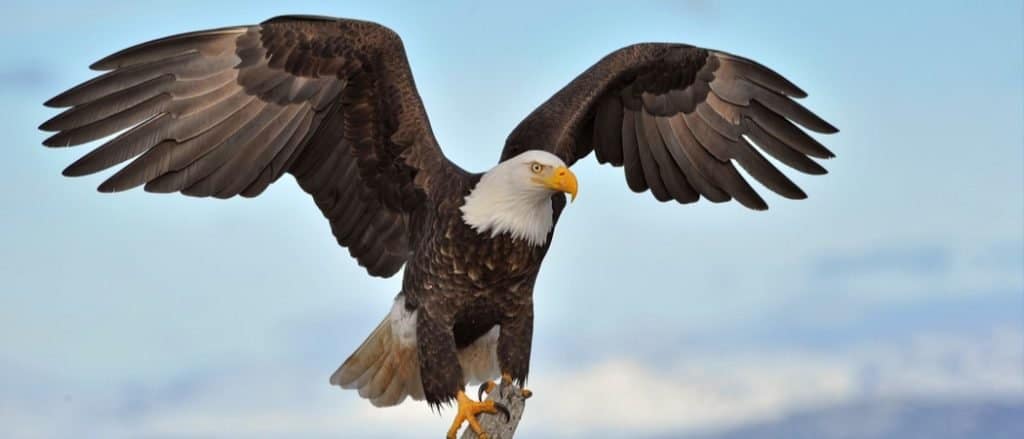
Eagles hunt weasels and other small animals.
©FloridaStock/Shutterstock.com
Although weasels are certainly tough customers, they are small rodents at the end of the day. That means they have a fair number of predators that are just as capable of hunting as them. Take a look at a list of the animals that the mighty weasel must fear:
- Eagles
- Hawks
- Owls
- Snakes
- Foxes
- Cats
- Dogs.
Birds tend to be the most effective predators against weasels because they can swoop in and kill the weasel without much of a fight. Also, animals like cats and dogs that are insurmountably large opponents can successfully kill weasels. Areas with a high human population attract weasels because they want to feed on pests or on human livestock.
However, that also brings weasels into contact with domesticated dogs and cats, both of which are common predators of the weasel.
Weasels are the smallest carnivores and among the most prolific hunters, feeding on mice, birds, chickens, and a host of other animals. They are tough mammals that come in a small package, a great reminder that evolution can produce effective predators of any size.
Their desire to frequently hunt and eat along with their tremendous capabilities as hunters makes weasels both a boon and a curse for people.
Are Weasels Good To Have Around?
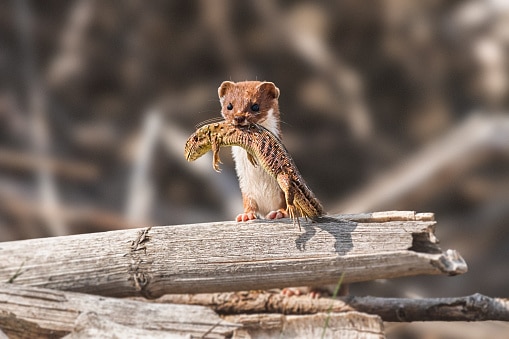
Weasels on your property could be a positive or a negative.
©castigatio/iStock via Getty Images
Weasels can be good and bad to have in your yard. They help control rodent populations by feeding on voles, shrews, mice, and rabbits, which can be a good thing, especially on farms where vegetable gardens or chicken coops and barns attract them. When they keep these numbers down, that can be a benefit. Weasels also eat fish, birds, frogs, and eggs.
Problems could arise if there are no rodents present for a weasel to prey on, as they may be tempted to raid the hen house if you own chickens. They are provoked by the frantic movements of animals in distress, and will often keep killing even if they’ve killed one, as it’s an instinctual type of behavior.
Weasels also burrow in the ground, which can cause damage to the look of the lawn or hazards, such as stepping into a hole. These burrows can also attract other burrowing animals like snakes.
On the other hand, a weasel can be a tasty distraction to larger predators like coyotes, foxes, or raptors that may otherwise go for chickens and small domestic animals.
Summary of 12 Foods Weasels Eat
Here’s a recap of the foods weasels most commonly prefer:
| Number | Food |
|---|---|
| 1 | Mice |
| 2 | Voles |
| 3 | Lemmings |
| 4 | Ducks |
| 5 | Rabbits |
| 6 | Chickens |
| 7 | Songbirds |
| 8 | Frogs |
| 9 | Fish |
| 10 | Turtles |
| 11 | Hedgehogs |
| 12 | Various eggs of their prey |
The photo featured at the top of this post is © Cecil Sanders / Creative Commons / Original
Thank you for reading! Have some feedback for us? Contact the AZ Animals editorial team.






